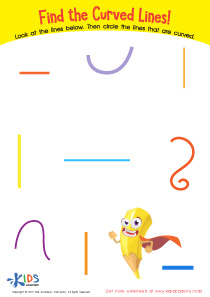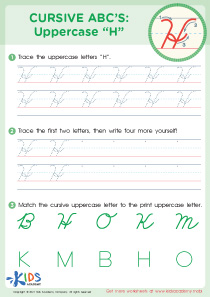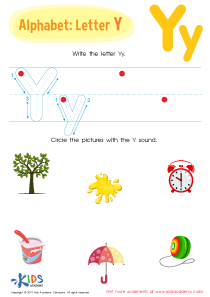Upper & Lowercase Letters Worksheets for Ages 4-8 - Page 3
50 filtered results
-
From - To
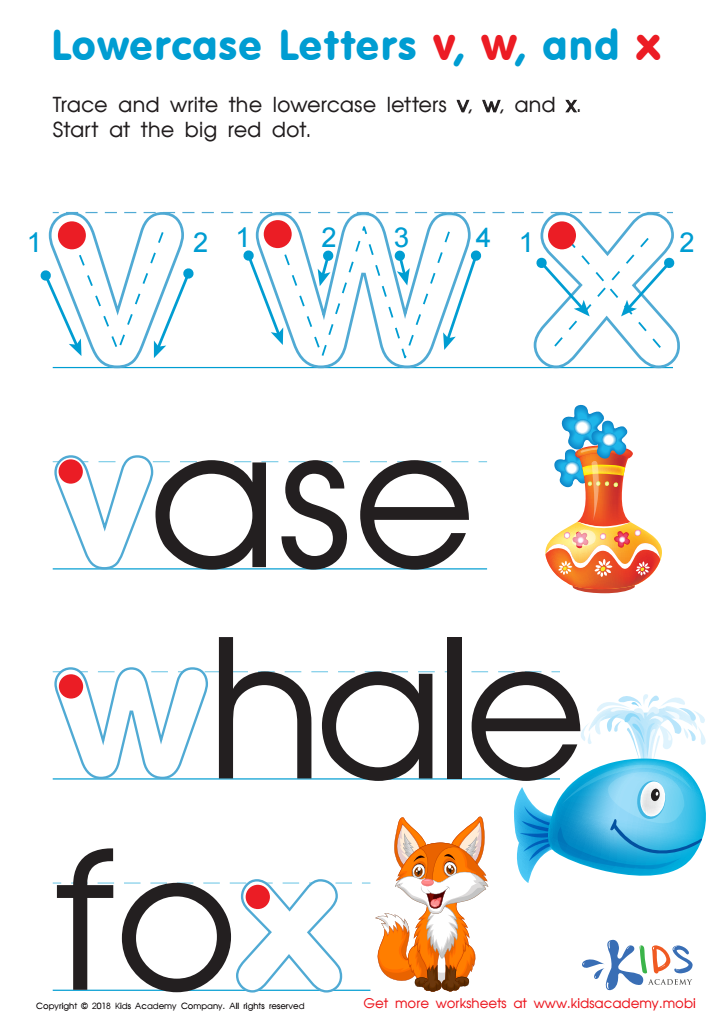

Lowercase Letters v w x Worksheet
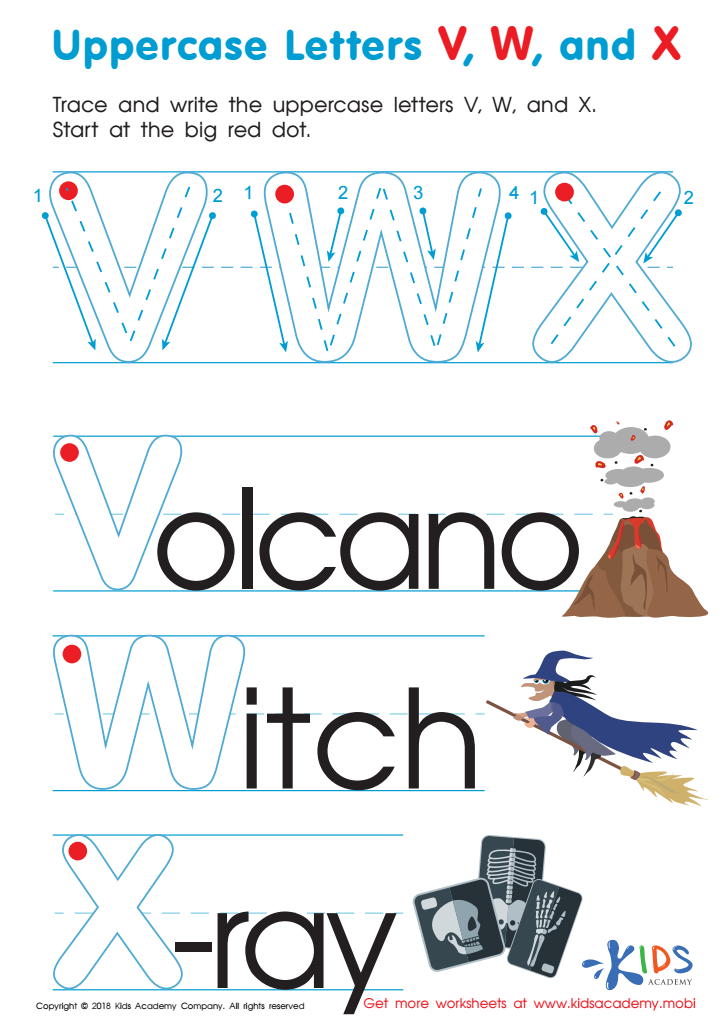

Uppercase Letters V, W, and X Worksheet
Understanding uppercase and lowercase letters is crucial for children aged 4-8 as it forms the foundation of their reading and writing skills. At this developmental stage, young learners are building the basic skills necessary for literacy. Recognizing both uppercase and lowercase letters enhances their ability to decipher texts, which promotes reading fluency. Early exposure to both letter forms helps children understand that uppercase letters often mark the beginnings of sentences and proper nouns, while lowercase letters fill out the rest of the text, following grammatical rules.
Additionally, familiarizing children with uppercase and lowercase letters aids in writing. Consistent practice enables children to properly use these letters when constructing sentences, contributing to clear and effective communication. It also helps in developing their fine motor skills, as different strokes are required for writing both uppercase and lowercase letters.
Introducing these letter forms in a fun, interactive way can inspire a love for reading and writing, crucial for academic success. Games, songs, and colorful books all contribute to making this learning process engaging. This early focus sets the pace for more advanced literacy skills, laying the groundwork for future learning and the child’s overall educational journey.

 Assign to the classroom
Assign to the classroom




